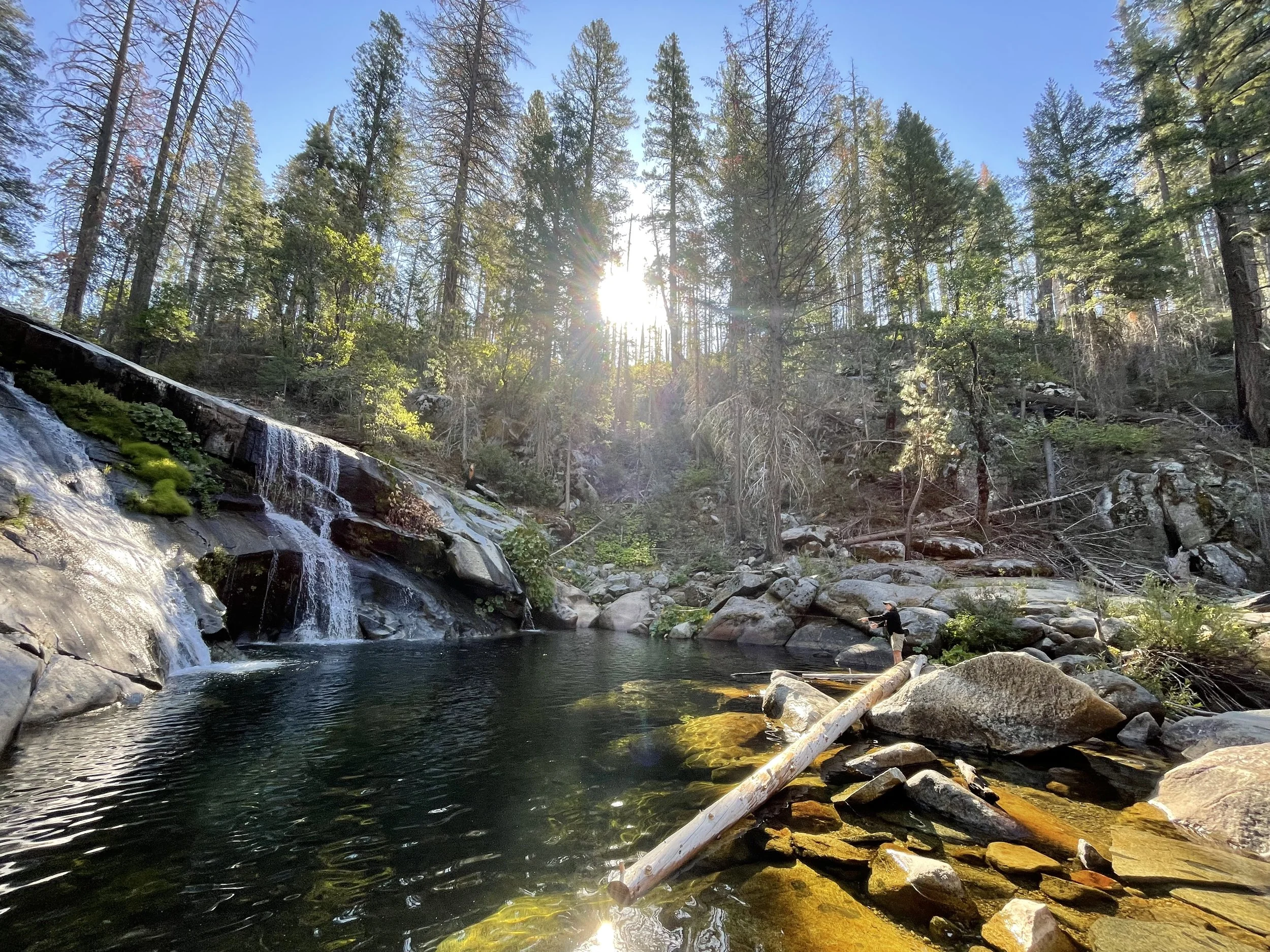Salmon: The Key to a Healthy River
It was a warm day in October when I first saw Cindy Charles, our TRT board member, fully in her element. She was standing on a sunlit rock near the Tuolumne River, fly fishing rod in hand. Cindy has been coming to this spot since she was a little girl. It was here that she learned to fish from her father, and it was here that she fell in love with the Tuolumne River.
As she taught me how to cast a fly rod, Cindy told me that every fall, the incredible Chinook Salmon used to swim upstream from the ocean, fighting against the current all the way to their spawning grounds in the Sierra Nevada. For Cindy and for so many others who have fallen in love with the Tuolumne River, these salmon are more than just fish—they are a vital keystone species for the ecosystems that provide us with so much joy and respite. When the Chinook thrives, the entire river ecosystem thrives.
A keystone species is defined as a species whose population health is indicative of the overall health of their ecosystem. Salmon are at the center of a complex web of interactions between plants, animals, and humans – keeping the whole system in balance.
How Salmon Support Life in Rivers
As salmon swim upstream, they transport marine-derived nutrients like nitrogen and phosphorus into freshwater ecosystems. These nutrients are essential for plant growth and are otherwise scarce in freshwater ecosystems. Salmon provide these essential nutrients by depositing their carcasses on riverbanks after they die—a process known as "nutrient recycling."
If you've ever wondered why certain rivers have such lush vegetation while others are barren, it's likely due to differences in nutrient availability. Rivers with large populations of salmon tend to have more nutrient-rich soils and, therefore, more abundant vegetation. Not only do salmon directly support plant growth, but they also indirectly support populations of animals that depend on plants for food—like deer, birds, and beavers.
Getting up Close and Personal
This weekend, our supporters will embark on a journey to Paddle with the Salmon. This annual trip commemorates the arrival of Fall in the Tuolumne Watershed. The season when traditionally over 100,000 salmon begin spawning in the river. This year, that number has dropped to only about 260 salmon counted so far.
This population loss is due to a myriad of factors, from dams to climate change and human development. Dams block the fish's passage upstream and prevent them from reaching their spawning grounds. Climate change warms rivers and alters streamflows, making it difficult for the fish to survive and reproduce. Human development increases water usage and degrades habitat quality. These threats have caused the Chinook salmon population to decline sharply over the past century.
By damaging or destroying keystone species like salmon, we destroy the web of life they support. But there is hope! We are working hard to protect and restore the Tuolumne River ecosystem so future generations can enjoy watching thousands of salmon return to spawn each fall.
Do you want to do your part in protecting the Tuolumne’s Salmon populations?
Consider becoming a member today.

